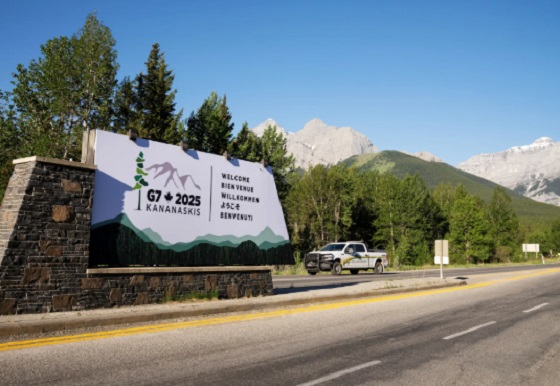Uncategorized
Wildfire death toll rises as search for missing continues

CHICO, Calif. — A message board at a shelter for the many people who fled California’s deadliest wildfire is filled with photos of the missing, as well as pleas for any information about relatives and friends.
“I hope you are okay,” reads one hand written note on the board filled with white and yellow sheets of notebook paper. Another had a picture of a missing man: “If seen, please have him call.”
Authorities on Tuesday reported six more fatalities from the Northern California blaze, bringing the total number of dead so far to 48. They haven’t disclosed the total number still missing, but earlier in the week that figure was more than 200.
Butte County Sheriff Kory Honea said a list of the missing would be released soon and that 100 National Guard troops would help teams already looking for remains.
“We want to be able to cover as much ground as quickly as we possibly can,” he said. “This is a very difficult task.”
As authorities increased efforts, people waited for any word on those still not found.
Greg Gibson was one of the people searching the message board Tuesday, hoping to find information about his
“It happened so fast. It would have been such an easy decision to stay, but it was the wrong choice,” Gibson said from the
More than 1,000 people were at shelters set up for evacuees.
Inside the church, evacuee Harold Taylor chatted with newfound friends.
Taylor, a 72-year-old Vietnam veteran who walks with a cane, said he received a call Thursday morning to evacuate immediately. He saw the flames leaping up behind his house, left with the clothes on his back and barely made it out alive.
Along the way, he tried to convince his
“We didn’t have 10 minutes to get out of there,” he said. “It was already in flames downtown, all the local restaurants and stuff,” he said.
The search for the dead was drawing on portable devices that can identify someone’s genetic material in a couple of hours, rather than days or weeks.
“In many circumstances, without rapid DNA technology, it’s just such a lengthy process,” says Frank DePaolo, a deputy commissioner of the New York City medical examiners’ office, which has been at the forefront of the science of identifying human remains since
Before the Paradise tragedy, the deadliest single fire on record in California was a 1933 blaze in Griffith Park in Los Angeles that killed 29.
At the other end of the state, firefighters made progress against a massive blaze that has killed two people in star-studded Malibu and destroyed well over 400 structures in Southern California.
The flames roared to life again in a mountainous wilderness area Tuesday, sending up a huge plume of smoke near the community of Lake Sherwood. Still, firefighters made gains.
Interior Secretary Ryan Zinke said he
The cause of the fires remained under investigation, but they broke out around the time and place two utilities reported equipment trouble. Gov.-elect Gavin Newsom, who takes office in January, sidestepped questions about what action should be taken against utilities if their power lines are found to be responsible.
People who lost homes in the Northern California blaze sued Pacific Gas & Electric Co. Tuesday, accusing the utility of negligence and blaming it for the fire. An email to PG&E was not immediately returned.
Linda Rawlings was on a daylong fishing trip with her husband and 85-year-old father when the fire broke out.
Her next-door
Rawlings learned on Tuesday morning — after days of uncertainty — that her “Smurf blue” home in Magalia was burnt to the ground.
She sat looking shell-shocked on the curb outside a hotel in Corning.
“Before, you always have hope. You don’t want to give up. But now we know,” she said.
___
Contributing to this report were Associated Press writers Sudhin Thanawala, Janie Har, Jocelyn Gecker and Olga R. Rodriguez in San Francisco.
Martha Mendoza And Gillian Flaccus, The Associated Press
Uncategorized
CNN’s Shock Climate Polling Data Reinforces Trump’s Energy Agenda


From the Daily Caller News Foundation
As the Trump administration and Republican-controlled Congress move aggressively to roll back the climate alarm-driven energy policies of the Biden presidency, proponents of climate change theory have ramped up their scare tactics in hopes of shifting public opinion in their favor.
But CNN’s energetic polling analyst, the irrepressible Harry Enten, says those tactics aren’t working. Indeed, Enten points out the climate alarm messaging which has permeated every nook and cranny of American society for at least 25 years now has failed to move the public opinion needle even a smidgen since 2000.
Appearing on the cable channel’s “CNN News Central” program with host John Berman Thursday, Enten cited polling data showing that just 40% of U.S. citizens are “afraid” of climate change. That is the same percentage who gave a similar answer in 2000.
Dear Readers:
As a nonprofit, we are dependent on the generosity of our readers.
Please consider making a small donation of any amount here.
Thank you!
Enten’s own report is an example of this fealty. Saying the findings “kind of boggles the mind,” Enten emphasized the fact that, despite all the media hysteria that takes place in the wake of any weather disaster or wildfire, an even lower percentage of Americans are concerned such events might impact them personally.
“In 2006, it was 38%,” Enten says of the percentage who are even “sometimes worried” about being hit by a natural disaster, and adds, “Look at where we are now in 2025. It’s 32%, 38% to 32%. The number’s actually gone down.”
In terms of all adults who worry that a major disaster might hit their own hometown, Enten notes that just 17% admit to such a concern. Even among Democrats, whose party has been the major proponent of climate alarm theory in the U.S., the percentage is a paltry 27%.
While Enten and Berman both appear to be shocked by these findings, they really aren’t surprising. Enten himself notes that climate concerns have never been a driving issue in electoral politics in his conclusion, when Berman points out, “People might think it’s an issue, but clearly not a driving issue when people go to the polls.”
“That’s exactly right,” Enten says, adding, “They may worry about in the abstract, but when it comes to their own lives, they don’t worry.”
This reality of public opinion is a major reason why President Donald Trump and his key cabinet officials have felt free to mount their aggressive push to end any remaining notion that a government-subsidized ‘energy transition’ from oil, gas, and coal to renewables and electric vehicles is happening in the U.S. It is also a big reason why congressional Republicans included language in the One Big Beautiful Bill Act to phase out subsidies for those alternative energy technologies.
It is key to understand that the administration’s reprioritization of energy and climate policies goes well beyond just rolling back the Biden policies. EPA Administrator Lee Zeldin is working on plans to revoke the 2010 endangerment finding related to greenhouse gases which served as the foundation for most of the Obama climate agenda as well.
If that plan can survive the inevitable court challenges, then Trump’s ambitions will only accelerate. Last year’s elimination of the Chevron Deference by the Supreme Court increases the chances of that happening. Ultimately, by the end of 2028, it will be almost as if the Obama and Biden presidencies never happened.
The reality here is that, with such a low percentage of voters expressing concerns about any of this, Trump and congressional Republicans will pay little or no political price for moving in this direction. Thus, unless the polls change radically, the policy direction will remain the same.
David Blackmon is an energy writer and consultant based in Texas. He spent 40 years in the oil and gas business, where he specialized in public policy and communications.
Uncategorized
Kananaskis G7 meeting the right setting for U.S. and Canada to reassert energy ties


Energy security, resilience and affordability have long been protected by a continentally integrated energy sector.
The G7 summit in Kananaskis, Alberta, offers a key platform to reassert how North American energy cooperation has made the U.S. and Canada stronger, according to a joint statement from The Heritage Foundation, the foremost American conservative think tank, and MEI, a pan-Canadian research and educational policy organization.
“Energy cooperation between Canada, Mexico and the United States is vital for the Western World’s energy security,” says Diana Furchtgott-Roth, director of the Center for Energy, Climate and Environment and the Herbert and Joyce Morgan Fellow at the Heritage Foundation, and one of America’s most prominent energy experts. “Both President Trump and Prime Minister Carney share energy as a key priority for their respective administrations.
She added, “The G7 should embrace energy abundance by cooperating and committing to a rapid expansion of energy infrastructure. Members should commit to streamlined permitting, including a one-stop shop permitting and environmental review process, to unleash the capital investment necessary to make energy abundance a reality.”
North America’s energy industry is continentally integrated, benefitting from a blend of U.S. light crude oil and Mexican and Canadian heavy crude oil that keeps the continent’s refineries running smoothly.
Each day, Canada exports 2.8 million barrels of oil to the United States.
These get refined into gasoline, diesel and other higher value-added products that furnish the U.S. market with reliable and affordable energy, as well as exported to other countries, including some 780,000 barrels per day of finished products that get exported to Canada and 1.08 million barrels per day to Mexico.
A similar situation occurs with natural gas, where Canada ships 8.7 billion cubic feet of natural gas per day to the United States through a continental network of pipelines.
This gets consumed by U.S. households, as well as transformed into liquefied natural gas products, of which the United States exports 11.5 billion cubic feet per day, mostly from ports in Louisiana, Texas and Maryland.
“The abundance and complementarity of Canada and the United States’ energy resources have made both nations more prosperous and more secure in their supply,” says Daniel Dufort, president and CEO of the MEI. “Both countries stand to reduce dependence on Chinese and Russian energy by expanding their pipeline networks – the United States to the East and Canada to the West – to supply their European and Asian allies in an increasingly turbulent world.”
Under this scenario, Europe would buy more high-value light oil from the U.S., whose domestic needs would be back-stopped by lower-priced heavy oil imports from Canada, whereas Asia would consume more LNG from Canada, diminishing China and Russia’s economic and strategic leverage over it.
* * *
The MEI is an independent public policy think tank with offices in Montreal, Ottawa, and Calgary. Through its publications, media appearances, and advisory services to policymakers, the MEI stimulates public policy debate and reforms based on sound economics and entrepreneurship.
As the nation’s largest, most broadly supported conservative research and educational institution, The Heritage Foundation has been leading the American conservative movement since our founding in 1973. The Heritage Foundation reaches more than 10 million members, advocates, and concerned Americans every day with information on critical issues facing America.
-

 Opinion1 day ago
Opinion1 day agoPreston Manning: Three Wise Men from the East, Again
-

 Addictions1 day ago
Addictions1 day agoWhy B.C.’s new witnessed dosing guidelines are built to fail
-

 Business1 day ago
Business1 day agoMark Carney’s Fiscal Fantasy Will Bankrupt Canada
-

 Uncategorized2 days ago
Uncategorized2 days agoCNN’s Shock Climate Polling Data Reinforces Trump’s Energy Agenda
-

 National12 hours ago
National12 hours agoCanada’s immigration office admits it failed to check suspected terrorists’ background
-

 conflict12 hours ago
conflict12 hours agoTrump’s done waiting: 50-day ultimatum for Putin to end Ukraine war
-

 Business1 day ago
Business1 day agoCarney Liberals quietly award Pfizer, Moderna nearly $400 million for new COVID shot contracts
-

 COVID-1924 hours ago
COVID-1924 hours agoTrump DOJ dismisses charges against doctor who issued fake COVID passports






